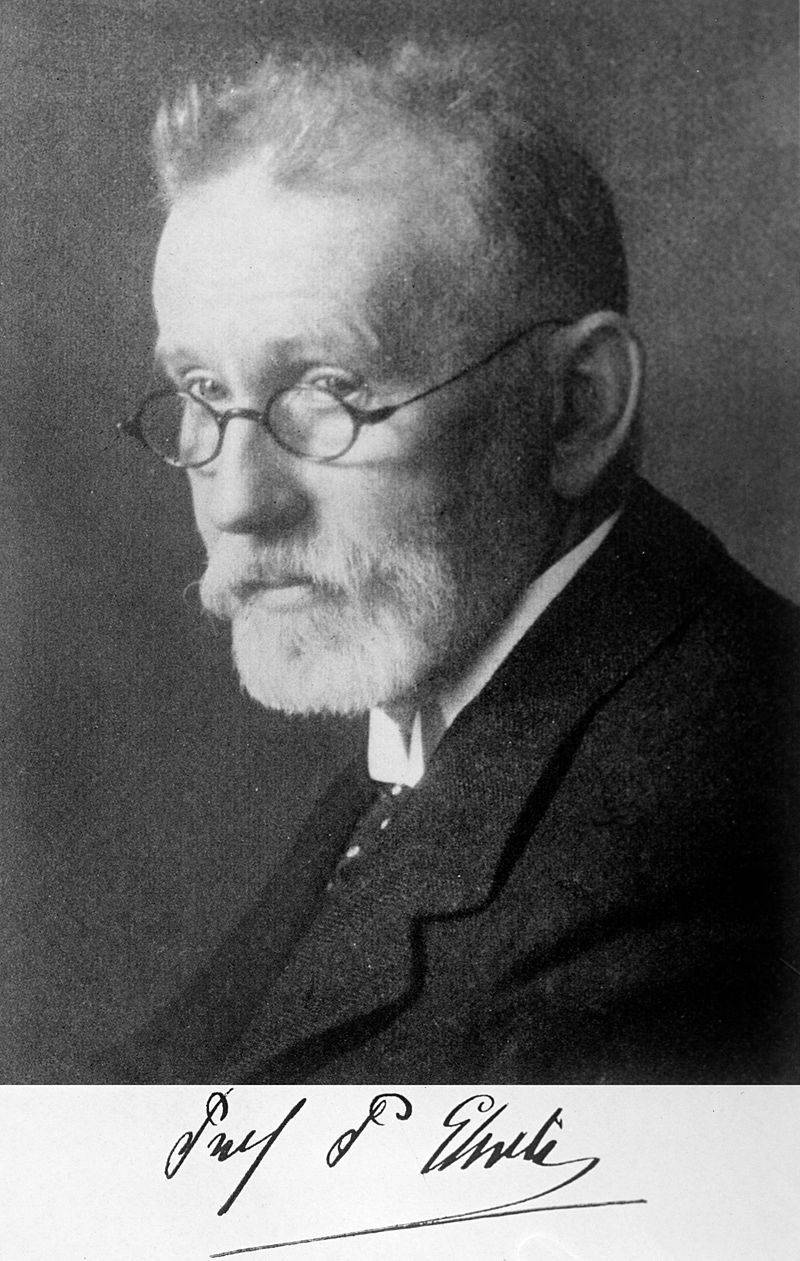Ehrlichiosis historical perspective
|
Ehrlichiosis Microchapters |
|
Diagnosis |
|---|
|
Treatment |
|
Case Studies |
|
Ehrlichiosis historical perspective On the Web |
|
American Roentgen Ray Society Images of Ehrlichiosis historical perspective |
|
Risk calculators and risk factors for Ehrlichiosis historical perspective |
Editor-In-Chief: C. Michael Gibson, M.S., M.D. [1] Associate Editor(s)-in-Chief: Ilan Dock, B.S.
Overview
Ehrlichiosis was first observed in the 19th century by the German microbiologist, Paul Ehrlich. Originally it was classified under the genus Rickettsia, however further observation led to a reclassification of the bacteria as a separate genus, Ehrlichia. The first Ehrlichia based infection was reported in South Africa in 1900. In the 1980's, Ehrlichiosis was recognized as a disease present in the United States. By 1999, Ehrlichia became a disease reportable to the Centers for Disease Control and Prevention.
Historical Perspective

Early History
- Paul Ehrlich is the German microbiologist credited with the discovery of Ehrlichia, the microbiological agent responsible for Ehrlichiosis.
- In the 19th century, the first case of an Ehrlichial based disease was discovered in South Africa.
- Ehrlichiosis was established as a tick-borne disease in the early 1900's.
- Originally the organism was classified under the genus Rickettsia, termed Rickettsia ruminatum.
- Later it was classified under the genus Ehrlichia.
- In 1991, Dr. Aileen Marty of the AFIP was able to demonstrate the bacteria in human tissues using standard stains, and later proved that the organisms were indeed Ehrlichia using immunoperoxidase stains. [1][2]
Recent History
- In the 1980's, Ehrlichiosis was first recognized as a disease present in the United States.
- In 1999, Ehrlichiosis was considered a reportable disease to the Centers for Disease Control and Prevention.
- In 2008, human infection by Panola Mountain (Georgia, USA) Ehrlichia species was reported.[3]
- On August 3, 2011, infection by a yet-unnamed bacterium in the genus Ehrlichia carried by deer ticks that has caused flu-like symptoms in at least 25 people in Minnesota and Wisconsin was reported; human ehrlichiosis was thought to be very rare or absent in Minnesota and Wisconsin.[2] The new species, which is very similar genetically to an Ehrlichia species found in Eastern Europe and Japan called E. muris, was identified at Mayo Clinic Health System's Eau Claire hospital.[2]
References
- ↑ Reeves WK, Loftis AD, Nicholson WL, Czarkowski AG (2008). "The first report of human illness associated with the Panola Mountain Ehrlichia species: a case report". Journal of medical case reports. 2: 139. doi:10.1186/1752-1947-2-139. PMC 2396651. PMID 18447934.
- ↑ 2.0 2.1 2.2 Julie Steenhuysen. 2011. New tick-borne bacterium found in upper Midwest. Reuters, 8/3/2011, http://www.trust.org/alertnet/news/new-tick-borne-bacterium-found-in-upper-midwest/, accessed August 4, 2011.
- ↑ Reeves WK, Loftis AD, Nicholson WL, Czarkowski AG (2008). "The first report of human illness associated with the Panola Mountain Ehrlichia species: a case report". Journal of medical case reports. 2: 139. doi:10.1186/1752-1947-2-139. PMC 2396651. PMID 18447934.